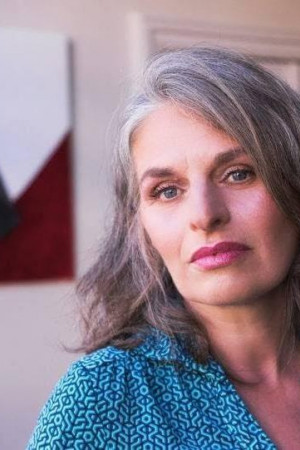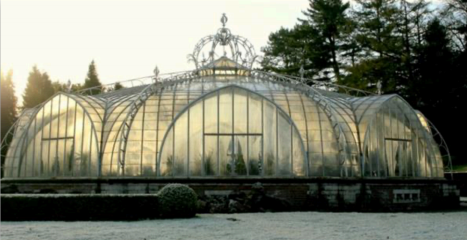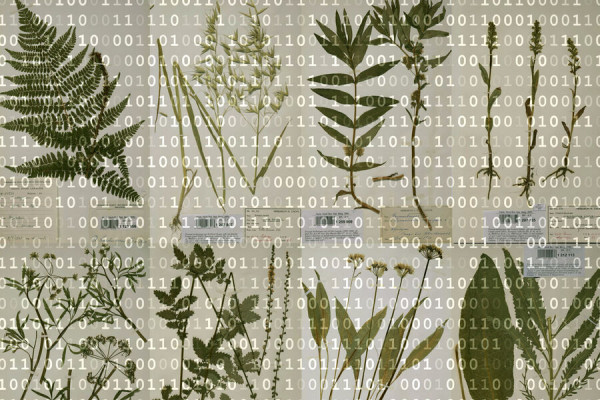
The history of the Meise Botanic Garden dates back to 1796. Thus the institution is older than the kingdom of Belgium, and therefore they have an experience with plants of more than two centuries. The Botanic Garden comprises 92 hectares with a lot of historic buildings, including a castle with a tower from the 12th century.
One of the missions of the Botanic Garden is the study of plants and mushrooms. The activities of the scientists to map and study the diversity of plants, mushrooms and algae cover the whole world, from Antarctica to the rain forests of Congo. The scientific activity focuses on a correct and scientific identification of plant species. What are the characteristics of one species? How many species exist? How can we distinguish species from one another? Unless we find answers to these fundamental questions, no economic activity whatsoever based on plants and plant-derived products can be carried out. Knowing the scientific name of a species is the key to unlock all the information on that species. For example, a correct identification helps to distinguish poisonous species from related medicinal plants or to identify threatened species in need of protection.
Jutta Kleber will speak to us about plants in our daily life. This would be a talk about the enormous importance of plants for humans. There will be stories about the origin, cultural value and more of food plants, medicinal plants, textile plants etc. The research on crop wild relatives will also be discussed. She will show, where possible, plants and locations in Meise Botanic Garden, to illustrate her topics.
SHORT BIO JUTTA KLEBER
After obtaining a Master in African studies, a long time ago, Jutta worked as a teacher for almost 20 years. Following her growing interest in nature, environment and sustainability, she decided to combine a study in Nature and Environmental Studies at the Open Universiteit Nederland with her job as a teacher. In 2012, this opened for her the doors to her present job as an educator at the Meise Botanic Garden.
“In this job, I am lucky to combine several of my passions: teaching and education, and the wonderfully diverse world of plants and human culture. The shared history of humans and plants, from the beginning of mankind to our present days, is one of my favourite approaches to the world of plants.”
During the talk she will give some examples of how plants have been used and are still being used, throughout history and cultures.
Note: Content and images not intended for copyright infringement.

Before our planned visit to Meise Botanic Garden, ISG invited Jutta Kleber, who works as an educator in the Garden, to give us a lecture about their activities.
Many of our members have gardens or big terraces where they plant flowers and bushes. This provides them with a personal connection to nature. No wonder the lecture by Jutta Kleber aroused lively interest in our group. This lecture was our second Zoom presentation, and it went successfully. Over 40 members listened to the lecture and posed questions at the end.
Belgium is rich in botanic gardens and the Meise Botanic Garden, which is situated in Flanders close to Brussels, is one of the biggest in the world. It occupies 92 hectares. Over the course of its history, researchers collected 400 000 species, that is to say, 5% of the entire natural richness known up to now, and all are accommodated in the Garden. By now 31.128 plant species have a documented history. The Garden has not only plants, trees, ponds, flower beds, but also herbariums and a wood workshop, which provide an important source of information to researchers. Among its 50 buildings, some are historic while others are newly constructed. The great glass green house is the most recognizable. The garden employs a staff of 180 and has 200 volunteers, as well as 25 freelance guides, who welcome annually some 175.000 visitors.
The Garden was started in the 18th century in the time of Napoleon when Belgium was under French rule. At that time, it was situated in the centre of the city where at present is the Brussels Botanic Garden. Later on, that space became too small and did not give the Garden the possibility to expand. So, the decision was taken to move it out of the city. In 1939 the process of moving the Garden to its new location started. Surprisingly it took place during the war years.
Finally, the new Garden was well established by 1974. The staff is happy with the new location, because it gives the garden the possibility to expand. Hence, the collection is growing.
The main mission of the Meise Botanic Garden is to build a sustainable future observing plants and fungi. The scientists map the diversity of plants, algae and mushrooms. Correct identification helps to distinguish poisonous species from medicinal ones and to identify threatened species in need of protection. There are 31.228 plants extensively documented. But we don’t know how many we are overusing and jeopardising their survival. Thus, the Garden is an important source of studying them.
The topic of Jutta Kleber’s lecture was “Plants in our life.” People use plants for food, in medicine, as a construction material and for clothes. It’s not possible to imagine our life without plants. For example, if we read in the Bible the story about the threat of locusts invading Egypt, we understand that there was nothing more horrible than that. The country would be devastated: millions would die of starvation, because food crops would be eaten by the locusts.
The presenter chose a few of the most important and most obvious plants which we can’t imagine life without – bananas, coffee, vegetables and fibre.

BANANAS
We start with bananas, which are the main source of nutrition in developing countries, not only as a dessert but as a main course. In Uganda a person consumes 250 kg of bananas a year. They use them as food, drink and a source of fibre. The origin of the banana plant is South-East Asia, but firstly it was domesticated in Papua-New Guinea 7000 years ago and used for its fibre. After it became a success, bananas started traveling. By cloning, a variety of bananas were developed from just two types.
Two wild ancestors led to enormous varieties. Until 1960 Gros Michel, which is the tastiest, prevailed. But it was replaced by Cavendish (Mauritius) because of the Panama disease, a fungal plant pathogen which attacked the Gros Michel.
The banana is not a tree, but the largest herbaceous flowering plant. There exist 70 species of bananas and scientists are constantly looking for more.
The production of bananas in the world is enormous. There is over-production and over consumption. The most consumed dessert banana (Cavendish) is grown prevailingly in monocultures which increases the risk of contamination. In the past, diseases have repeatedly wiped out whole plantations, or even the whole production. Now there exist many varieties of banana plants and it is not very likely that disaster will strike all of them at the same time.

COFFEE
In the 19th century there was only Arabica, which originated in the highlands of Ethiopia. There exists the legend of Kaldi. He was a shepherd and lived in the 9th century in Ethiopia. Once by chance he paid attention to the way the animals he was taking care of got excited and behaved differently after they ate the red berries they found on certain green bushes. He tried them and liked the effect of the berries. He was intoxicated, energetic and more vigorous. Then he told his tribal people about his experience. That was how the coffee beans’ fame started. Now it is estimated that half of the world’s population begins their day with a cup of coffee.
There are only two types of coffee plants. Actually, they are not beans according to the botanists, but the seeds which are found inside the ripe flowers. Coffee is farmed not only for its qualities and taste, but also for its aroma. For example, the number one coffee is Arabica. In the world as a whole, people consume 40% Robusta (which is less aromatic) and 60% Arabica.
In Africa, coffee is considered a symbol of friendship and people pass through a ritual brotherhood. They put the seeds in blood, then exchange blood, thus they become blood brothers. This is a man’s business. In 1878 Asian Arabica production was devastated by a fungal disease. Later in the West and Central Africa, Canephora coffee was discovered; it is resistant to fungal disease but less fine in taste.
All attempts to domesticate another coffee plant up to now have not been successful. Researchers are trying to develop another type of coffee with a low percentage of caffeine or still better without it. Piet Staffelen is a famous Belgian researcher, who works in herbariums did very important research into caffeine-free coffee. But a lot of steps are needed to introduce a new variety. Coffee grows in warm climate close to the Equator. In Vietnam, in Hawaii, in Ethiopia it grows in rain forests, but they are cut by the locals who need land to plant other crops. This can lead to rising tension between the locals and coffee producers. The Meise Botanic Garden is organizing an exhibition entitled ‘Coffee in the Spotlight’ from July 2021 until April 2022 .
There are three things which are most important for botanists. One is research. The second is public outreach – to try to involve people in their activities and fight ‘plants blindness’. This means our ignorance: for example, many people see just ‘green’, and they don’t suspect how complex plants are. The third one is taxonomy. The taxonomist is the one who looks for new plants and finds them and introduces them into our life.

CABBAGE
All types of cabbage come from two plants: – Brassica oleracea, domesticated probably in Britain and Continental Europe 1000 B.C. and Brassica rapa, domesticated in West- Central Asia and called Chinese cabbage. Brassicca oleracea is close to broccoli and cauliflower. Before Roman times, people worked to develop cabbages. Cabbage was always popular and consumed in big quantities. Now the Chinese produce 32 million tons, much more than any other country. Still, researchers are trying to develop different types of cabbage, for example crossing cauliflower and broccoli. Our lecturer explained that it is done for the purpose of creating plants with a higher percentage of protein and to improve resistance to diseases.

COTTON
Cotton fibres were discovered several times in history: in 5000 B.C. in Sudan, in Peru in 3000 B.C. and in Central America a bit later. It is used for making clothes, in industry, for making paper and for food. Cotton is a shrub native to the tropical and subtropical regions around the world. The use of cotton for fabric goes back to prehistoric times. There are four commercially grown species of cotton, all domesticated in antiquity. There are now two main producers of cotton. These are India and China, whose annual production is about 26 million tons. But to make a shirt you need irrigation, pesticides, colouring, confection, trade.
FIBRES
There are many varieties and many alternatives for cotton. Bamboo has more sustainable fibre, flax is the oldest. Hemp is very fast growing.
The lecture was coming to an end, but the audience was ready to listen to more and wanted to ask questions. They were about fair trade, about soil contamination, about bees which are under threat of extinction, especially wild bees. Jutta Kleber tried to answer all of them. I found it useful to hear about the role the researchers working in the Meise Botanic Garden play in genetics. They are not involved with GM, but they do gather the genetic material which can be used by other institutions. Natural modification of plants always existed, and it continues. People have to make a choice regarding which plants they will be using.
CONCLUSION
We can’t survive without plants and we should pay more attention to their well-being and we should protect them. Just imagine a day without coffee, fruit or vegetables, a week without cotton or other fibres like silk and flax, a month without wooden materials, without flowers and without trees. Do we want to live in such a world? I don’t think so. It pays to read novels by futurist writers and see their descriptions of empty planets occupied by vast mountains, accumulations of stones. If we don’t’ want to turn our planet into something similar, we should help plants to stay with us.
UGANDA PROJECTS
Jutta Kleber spoke to us also about a number of projects she personally supports which are in relation to plants and gardens in the life of people. We, at the ISG Board, decided to donate to these projects in lieu of payment for her talk and invite you consider joining us. UGANDA PROJECTS - SEEDS FOR A SOUND FUTURE In collaboration with a local organization, Uganda projects supports since 2017, 25 single (grand)mothers and their (grand)children in their daily struggle for life. We focus on education, organic farming for livelihood and income generation and sustainable use of resources. At the moment, 11 primary school children are sponsored by Uganda projects, and we intend to sponsor at least one child in each of the 25 families. In the field of agriculture, we offer trainings and give financial support for acquiring seeds and equipment. We also financed the installation of a rainwater tank for each family. In 2021, we hope to acquire improved cooking stoves for the families. These stoves use less charcoal and produce less smoke, and therefore will have a positive impact on the environment, the health and the economic situation of the women.
Our website: https://juttakleber.wixsite.com/ugandaprojects
Our account number: BE65 0636 1195 9796



